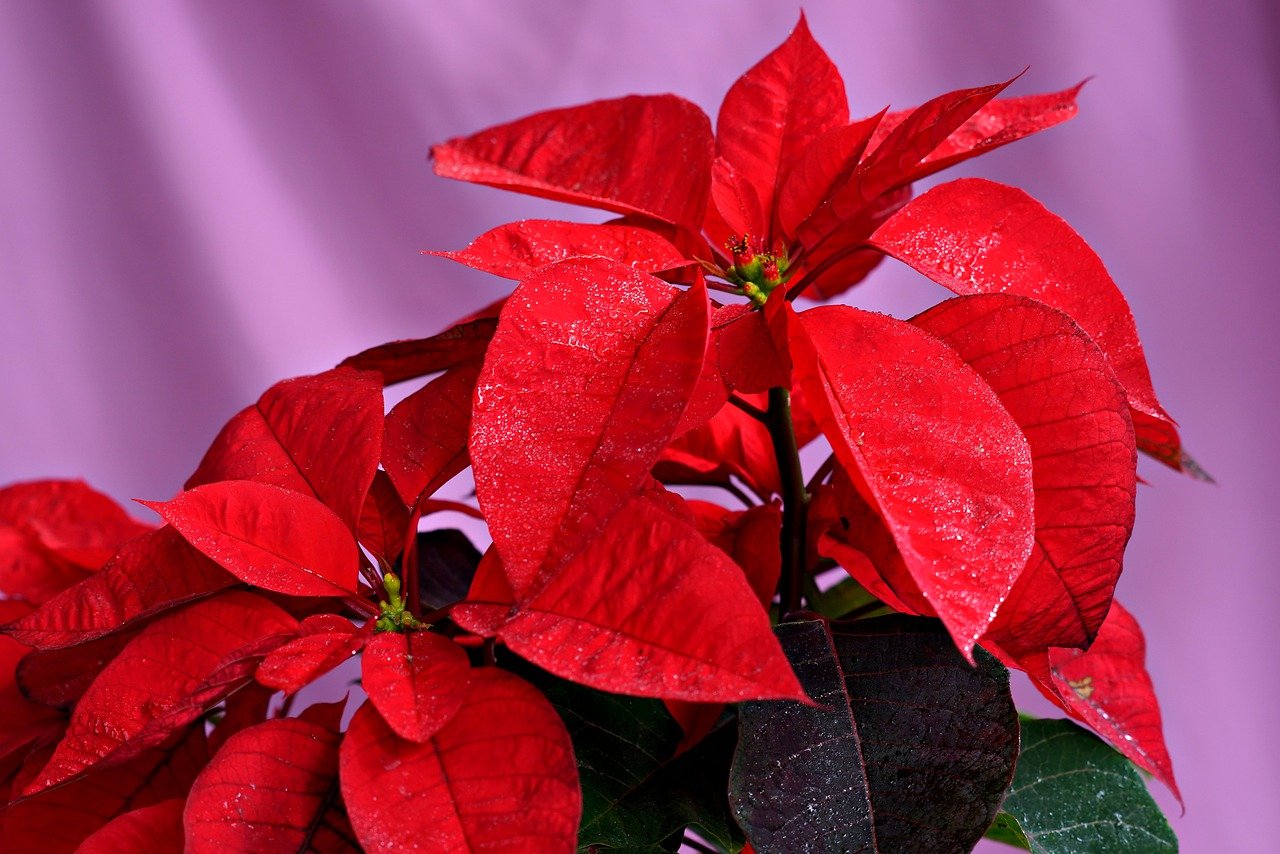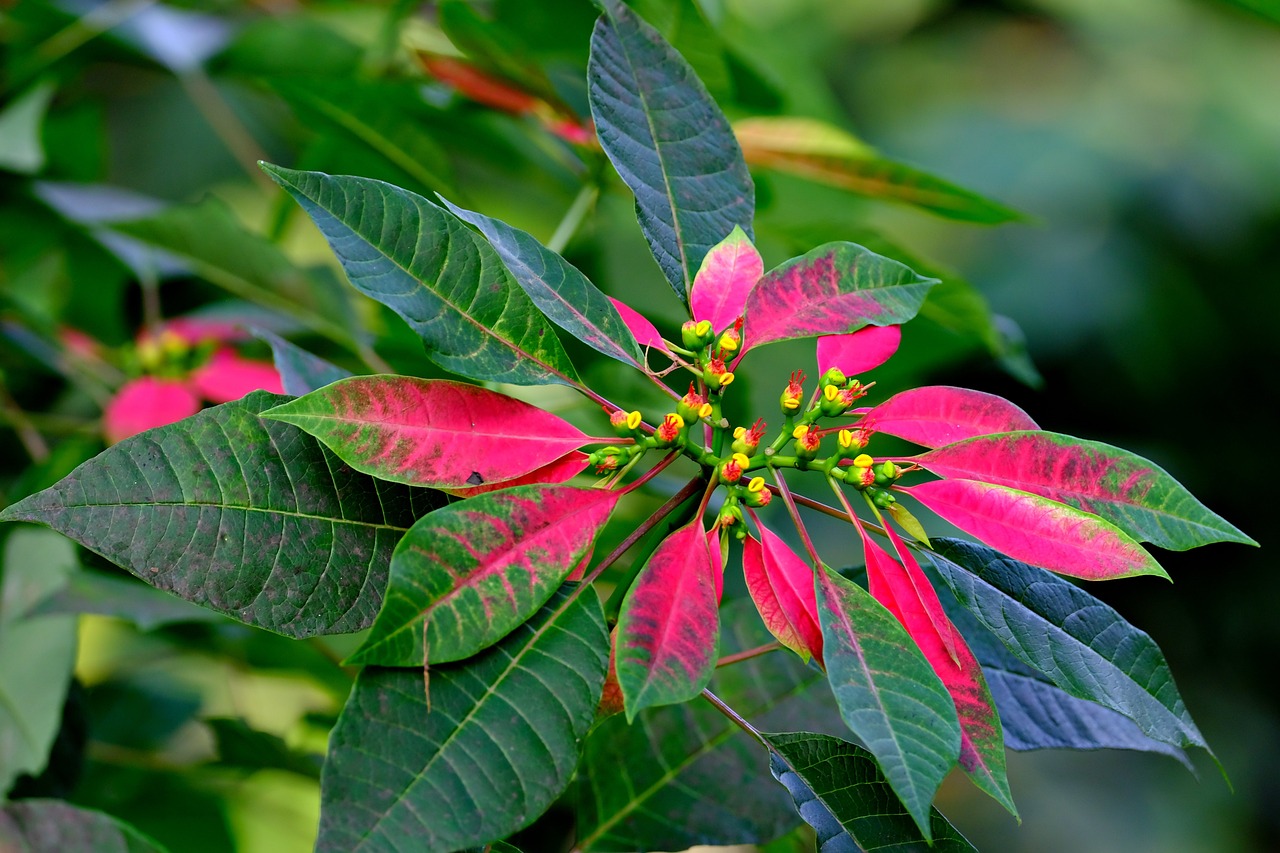
Poinsettias are the classic stars of holiday decor, turning any room into a festive wonderland with their vibrant red, white, or pink bracts. They’re like the glittery ornaments of the plant world—beautiful, but can you keep them alive longer than just December? With the right care, you can! Mastering poinsettia care will not only keep your blooms bright but may also earn you the title of “Plant Whisperer” among your friends.
Understanding Your Poinsettia – A Unique Plant with Unique Needs

To care for a poinsettia successfully, you must understand its personality. Like that friend who loves attention but gets cranky if you don’t keep the room at a perfect temperature, these plants can be a bit finicky. But don’t worry—once you know the ropes, you’ll be the proud parent of a thriving, festive plant.
What Makes Poinsettias So Special?
Native to Central America, poinsettias (Euphorbia pulcherrima) were once just wild shrubs that enjoyed a laid-back life in Mexican forests. Today, these winter-flowering beauties have stolen hearts worldwide with their dazzling colors. And, let’s be honest, they can totally steal the show at your holiday gatherings. Just make sure to keep them off the dinner table unless you want to deal with that one guest who insists on rearranging the centerpiece!
Setting Up the Perfect Environment for Your Poinsettia
A happy poinsettia is all about the right environment. They’re like your high-maintenance friend who needs just the right mix of comfort and ambiance.
The Right Lighting – Bright, Indirect Light
Poinsettias love light, but too much direct sunlight is like giving your friend a sunburn at the beach—nobody wants that! Place your poinsettia near a bright window where it can bask in indirect sunlight for about 6 hours a day.
- Tip: If your home is darker than a cave, consider using a grow light. Just remember, we’re trying to grow plants, not a greenhouse of nightmares!
Temperature – Warm Days, Cool Nights
Poinsettias thrive in a cozy environment, with temperatures between 65°F and 70°F during the day and a little cooler at night—around 60°F. If you wouldn’t feel comfortable on a chilly drafty night in your PJs, your poinsettia won’t appreciate it either. Keep them away from heating vents, fireplaces, and that door your cat insists on opening for no reason!
Watering Your Poinsettia – Finding the Perfect Balance
Watering can be a bit of a balancing act. Too much love (water) and your poinsettia might drown; too little and it’ll start to look like it’s auditioning for a sad plant meme.
When and How to Water Your Poinsettia
- Check the soil regularly. Poinsettias prefer slightly moist soil, so check it every few days. If you stick your finger in the soil and it feels like the Sahara Desert, it’s time to hydrate!
- Water thoroughly but infrequently. When the top inch of soil feels dry to the touch, give your plant a good drink, allowing excess water to drain out. Think of it as a refreshing shower rather than a bathtub dunking.
- Avoid waterlogging. Make sure your pot has drainage holes—because nobody wants a soggy plant with roots that feel like they’re taking a mud bath!
Feeding Your Poinsettia for Healthy Growth
Just like we all appreciate a good meal, so does your poinsettia! Giving it the right nutrition will help it flourish.
Fertilizer Tips for Poinsettias
- Frequency: Feed your poinsettia once a month during its growing period, which typically begins in spring. This is when it’s gearing up to show off again.
- Type: Use a balanced, water-soluble fertilizer (like 20-20-20). It’s like a balanced diet but for plants—because we all know how picky they can be!
- Avoid Overfeeding: During winter, when the poinsettia is resting, skip the fertilizer. They’re like that friend who hibernates until spring.
Pruning and Re-potting – Essential Care for Year-Round Health
Pruning and re-potting are crucial to keeping your poinsettia healthy and looking fabulous. Don’t be afraid to give your plant a little trim—it won’t mind, and it’ll grow back looking like a million bucks!
How to Prune Your Poinsettia
- Timing: Prune your poinsettia in early spring, around March or April. Think of it as giving your plant a fresh haircut after the holiday party.
- Cut Back to Encourage Growth: Trim each stem down to about 4–6 inches to stimulate new growth. Your poinsettia will thank you with more vibrant blooms next season!
- Remove Dead or Weak Stems: Snip away any stems that look like they’ve had too many holiday parties and are past their prime.
Re-potting Your Poinsettia
If your poinsettia outgrows its pot, it’s time for a little upgrade. Re-potting is the plant equivalent of moving into a bigger apartment.
- Choose a slightly larger pot to give roots room to grow. Nobody likes being cramped!
- Use fresh potting soil with good drainage—think of it as a luxurious new bed for your plant.
- Re-pot during spring after you’ve pruned the plant, so it doesn’t get stressed out.
How to Encourage Blooms for Next Holiday Season
The true magic of poinsettia care comes when you encourage it to bloom again. It’s a bit like training for a marathon—commitment and consistency are key!
Adjusting Light Exposure
To coax out those signature colorful bracts, your poinsettia needs a bit of a light regimen. Think of it as giving it a secret spa treatment to prepare for the holiday season.
- Cover or move your plant to a completely dark place (like a closet) from evening to morning for about 8 weeks starting in the fall.
- Expose it to bright light during the day for about 10 hours. This is the ultimate glow-up plan for your plant!
The Bloom Cycle – When to Start
Start this dark cycle in late September or early October, and soon you’ll have bright bracts just in time for the holiday season. Remember, consistency is key—don’t skip a night, or you’ll be left with a pouty plant.
Common Poinsettia Problems and How to Fix Them
Even the best plant parents encounter a few hiccups. But don’t worry—most problems can be resolved faster than you can say “where’s my watering can?”
Troubleshooting Tips
- Leaf Drop: This usually means your plant is not a fan of sudden temperature changes.
- Solution: Move your poinsettia to a stable, draft-free location, away from your toddler’s air cannon (also known as a fan).
- Yellowing Leaves: Could indicate you’re being a tad too generous with the watering.
- Solution: Let the soil dry out a bit before watering again. Your plant will be more forgiving than that one friend who can’t take a hint.
- Drooping Bracts: Lack of water or low humidity.
- Solution: Increase humidity around the plant (try misting it), and make sure you’re giving it a good drink. A little spa day never hurt anyone!
Fun Facts About Poinsettias
Want to impress guests with your poinsettia knowledge? Here are some fun facts that will make you the life of the party!
- Poinsettias were named after Joel Poinsett, the U.S. ambassador to Mexico who introduced them to America in 1825. So, technically, this plant is an international diplomat!
- Contrary to popular belief, poinsettias are not deadly to pets. However, they might cause a mild tummy upset—so keep them out of reach if your furry friends are curious.
- In Mexico, the poinsettia is called “Flor de Nochebuena,” or “Flower of the Holy Night,” symbolizing Christmas. So, it’s not just pretty; it’s also deeply meaningful!
